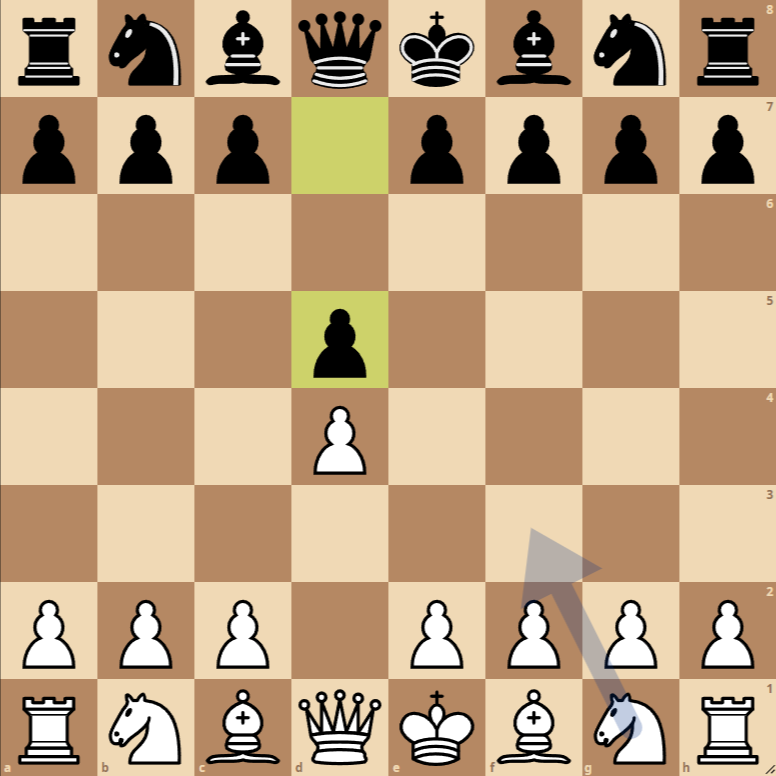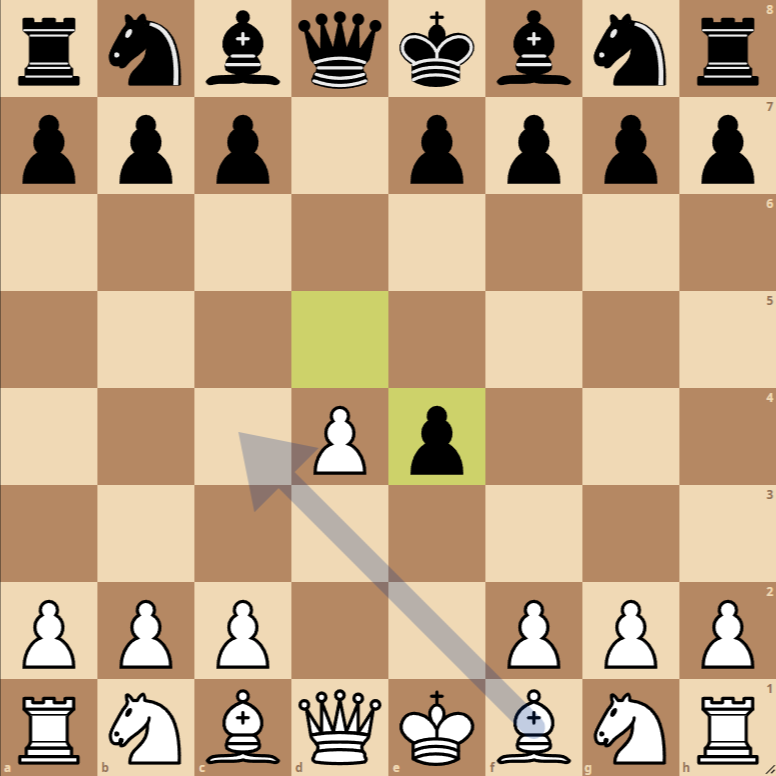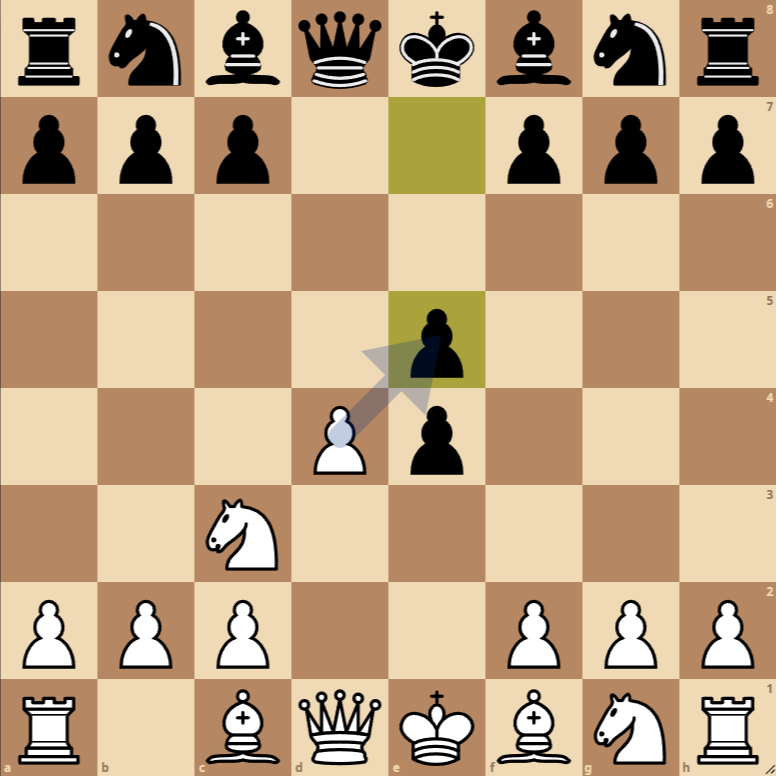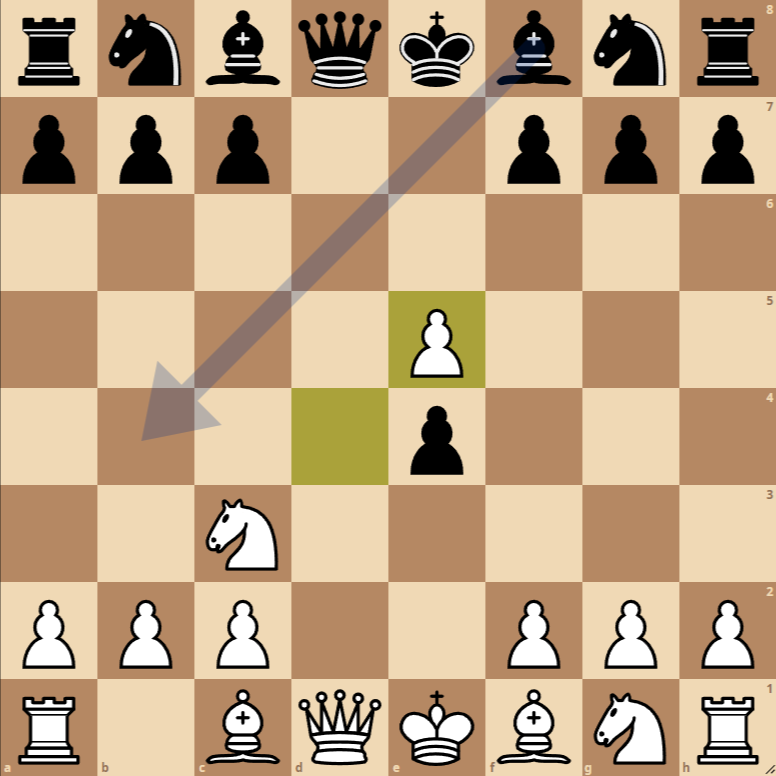How to Play the Blackmar-Diemer Gambit: Lemberger Countergambit Final Variation



- 1. d4 d5: White initiates with a central pawn advance, while Black responds in the same manner, establishing central control and preparing the development of minor pieces.
- 2. e4 dxe4: White offers a pawn to disrupt Black’s pawn center and open lines for their pieces. Black accepts the gambit by capturing the pawn on e4.
- 3. Nc3 e5: White develops a knight, threatening Black’s advanced pawn on e4. Instead of defending the pawn, Black counterattacks in the center with another pawn advance.
- 4. dxe5: White captures the pawn on e5, maintaining pressure in the center and beginning to restructure their central control.
Variations of the Blackmar-Diemer Gambit: Lemberger Countergambit Final Variation
Defense of the e4 Pawn
A possible variation for Black after 2.e4 could be defending the e4 pawn with f5, thus protecting the advanced pawn and aiming to maintain tension in the center.
Gambit Declined
Another variation would be for Black to decline the gambit by playing 2…e6, seeking to strengthen their center without accepting the offered material, prioritizing pawn structure and harmonious piece development over material.
Blackmar-Diemer Gambit Lemberger Countergambit: Position Analysis and Strategies
The Blackmar-Diemer Gambit is a bold opening that aims to quickly unbalance the game and lead it into complex tactical positions. In the specific Lemberger Countergambit variation, White sacrifices a pawn early on to gain a development advantage and attacking possibilities.
The sequence of moves presented to us:
- 1. d4 d5
- 2. e4 dxe4
- 3. Nc3 e5
- 4. dxe5
brings us to a critical moment in this opening.
Current Position
After 4. dxe5, White has regained the pawn offered in the gambit but has allowed Black to occupy the center with their pawns. Tension focuses on the d-file and the a4-e8 diagonal, with both sides looking to capitalize on their respective plans.
Strategies and Tactics for White
Rapid Development: The fundamental idea behind the gambit is sacrificing material for piece development and activity. White should continue developing their pieces rapidly, aiming to control key squares and create direct threats against the Black king.
Exploiting the Center: With the e5 advance, White has started to exert pressure in the center. A logical next step would be developing the bishop and possibly seeking a kingside castling to secure the king and connect the rooks.
Attack on the Black King: Without castling, the Black king can become vulnerable to attacks. Moves like Bc4, targeting f7, or even more aggressive ideas like f3 to open the f-file, could be considered.
Strategies and Tactics for Black
Active Counterplay: Faced with a gambit, accepting the offered material and seeking active counterplay is crucial. Black has already begun this plan with the e5 advance.
Careful Piece Development: It’s important for Black to efficiently develop their pieces, protecting the king while simultaneously creating counterpressure in the center and kingside.
Suggested Move Options: Black has several interesting options:
- Dxd1+: Capturing the White queen offers to simplify the position, which can be beneficial given the pressure in the center. However, after the king’s recapture, White would maintain some initiative due to their faster development.
- Cc6: Developing the knight to c6 strengthens control over the center and prepares the way for queenside castling, offering dynamic play.
- Ab4: Pressuring the c3 knight with the bishop can be an interesting tactic to disrupt White’s development and potentially force structural weaknesses.
Conclusion
The resulting position is dynamic, with opportunities for both sides. White enjoys a slight development advantage and has the potential for a quick attack if Black doesn’t respond accurately. Black, on the other hand, has enough counterplay thanks to their solid pawn center and tactical possibilities to unbalance the position. The choice between Dxd1+, Cc6, or Ab4 will depend on the preferred playing style and Black’s evaluation of the position.

